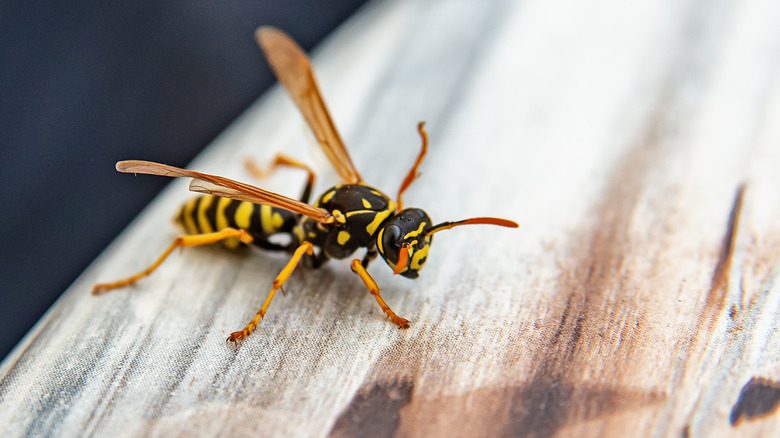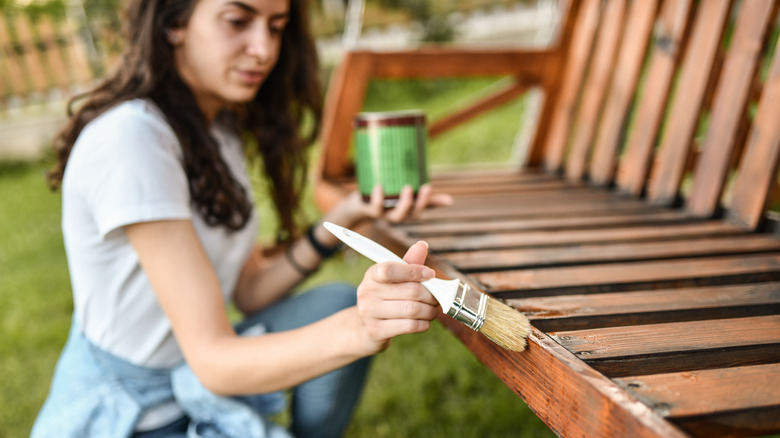The Wood Furniture Mistake That's Attracting Wasps
We may receive a commission on purchases made from links.
If you've ever cozied up in your garden to enjoy a cup of tea or get some fresh air only to be chased back inside by wasps, you know how frustrating it can be. In addition to being unpleasant, a wasp-infested outdoor area can also be dangerous, as these little creatures might sting anyone in the vicinity or set off allergic reactions. But while wasps can be naturally drawn to your yard by plants and insects (after all, the outdoors are their home!), there may be other things that are attracting wasps to your home and garden without you realizing. If your outdoor furniture is made of untreated wood, it might be what's inviting these unwanted guests into your outside space.
Wasps love to nibble on wood, looking for pulp that they can use to build their nests. That's why the areas under your garden furniture might be among the sneaky spots where wasps are building their nests around your home. A few clues will tip you off when wasps have gotten to your wood furniture, like small holes, chew marks, or wood shavings nearby. Luckily, it doesn't have to get to that point, as there are some measures you can take to protect yourself and your furniture before wasps become a problem.
Treating your wood furniture helps keep wasps away
One way to prevent wasps from building nests near your home, particularly in your garden seating area, is to treat your wood furniture with a protective coating. Sealing any gaps in your wood furniture will stop the wasps from getting inside and chewing on the wood or building nests underneath. To begin, apply wood putty to fill in any holes, and then top it all off with a sealant — like the Rainguard Wood Sealer — to make sure your furniture is off limits for any wasps nearby. Once your furniture is protected, keep inspecting it regularly for any signs of wasp presence, as early detection can help you deal with any potential issues more efficiently.
If you want to take your protection up a notch, try spraying a mixture of water and essential oils on your patio furniture. Peppermint, ylang ylang, lavender, and citronella oils all serve as natural wasp repellents due to their strong scents that wasps don't like. While sealing your furniture will make sure wasps can't get inside the wood, this solution will make the area altogether less inviting for wasps, keeping your furniture and yourself safe from these garden intruders.

